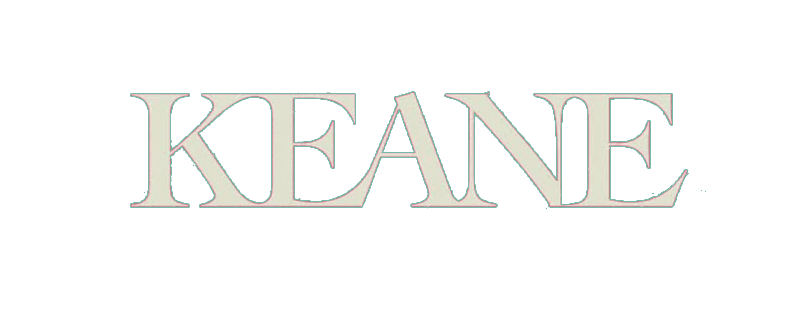Your Rating (Click a star below)
![]()
![]()
![]()
![]()
![]()
![]()
![]()
![]()
![]()
![]()
Total Rating
![]() (6 users)
(6 users)
1,113,488
8,106,290
3D Track Thumb![]()
Track Description
Available in:
"Somewhere Only We Know" is a song performed and composed by English alternative rock band Keane, officially released as their third commercial single, and appearing as the opening track of their debut studio album, Hopes and Fears (2004) as the first single. The song was Keane's first major commercial release, becoming one of the biggest hits of 2004 worldwide and peaking on the UK Singles Chart at number three during its first week of sale. It was also Keane's best-selling single until "Is It Any Wonder?" in 2006.
In 2013, the song was covered by Lily Allen for a John Lewis Christmas advert. Her version surpassed the success of the original in the UK, topping the UK Singles Chart and selling over 600,000 copies.
The first demo was composed by Tim Rice-Oxley circa 2001. Rice-Oxley said that the song came from "hammering away on the piano" explaining "I was thinking of something like David Bowie's "Heroes", which you drive along to a really rocking beat. ... It was one of the first things we recorded for the album." It was first played on the guitar just before Dominic Scott left the band, and recorded as a demo the same year with a Yamaha CP70 instead of the guitar. Keane recorded the final version in 2003 at the Helioscentric Studios, Rye, East Sussex for the album. Keane also played this song at the historic concert Live 8 in London, along with the single "Bedshaped".
A demo version of "Somewhere Only We Know" was leaked into the Internet in 2004. This version features a different length (4:24) and an extra bridge. Chaplin's shout at the outro is removed.
"Somewhere Only We Know" is a traditional piano rock song. The piano is the most relevant instrument, due to its harmonic and rhythmic role. It is played in quavers throughout the whole song, holding the tempo and the rhythmic pattern. The studio version is recorded in 87bpm, and follows a 4/4 time signature, one of the most commonly used in traditional rock songs. It is in the key of A major. The song form can analyzed as "ABAB CBCB", a variation of the strophic form. The verse (A) chord progression is a plain (I-II-V), one of the most used chord progressions in music; the chorus (B) presents a (VI-III-IV-V) progression; the variation of the verse section (C) presents a (II-III-IV-V) progression.
The bass line was recorded by Rice-Oxley. When played live, this song uses a pre-recorded bass, which is played in an Apple PowerBook G4. The 16-beat rhythm was made by Hughes. The song relies heavily in synthesizers, sampling and organ timbre, used to complement the harmonies in the song.

File Hashes
 HASH1: 69D5B9A5612F38FD
HASH1: 69D5B9A5612F38FD
 HASH2: 63094B715EAE87A8 (FLAC)
HASH2: 63094B715EAE87A8 (FLAC)
 HASH1: 1BA1205C4EA6CD18
HASH1: 1BA1205C4EA6CD18
 HASH2: D4D4265C269E9E93 (MP3)
HASH2: D4D4265C269E9E93 (MP3)
 HASH1: 89CC308AD6076E12
HASH1: 89CC308AD6076E12
 HASH2: 85A927DE388B256C (MP3)
HASH2: 85A927DE388B256C (MP3)
Available in:
"Somewhere Only We Know" is a song performed and composed by English alternative rock band Keane, officially released as their third commercial single, and appearing as the opening track of their debut studio album, Hopes and Fears (2004) as the first single. The song was Keane's first major commercial release, becoming one of the biggest hits of 2004 worldwide and peaking on the UK Singles Chart at number three during its first week of sale. It was also Keane's best-selling single until "Is It Any Wonder?" in 2006.
In 2013, the song was covered by Lily Allen for a John Lewis Christmas advert. Her version surpassed the success of the original in the UK, topping the UK Singles Chart and selling over 600,000 copies.
The first demo was composed by Tim Rice-Oxley circa 2001. Rice-Oxley said that the song came from "hammering away on the piano" explaining "I was thinking of something like David Bowie's "Heroes", which you drive along to a really rocking beat. ... It was one of the first things we recorded for the album." It was first played on the guitar just before Dominic Scott left the band, and recorded as a demo the same year with a Yamaha CP70 instead of the guitar. Keane recorded the final version in 2003 at the Helioscentric Studios, Rye, East Sussex for the album. Keane also played this song at the historic concert Live 8 in London, along with the single "Bedshaped".
A demo version of "Somewhere Only We Know" was leaked into the Internet in 2004. This version features a different length (4:24) and an extra bridge. Chaplin's shout at the outro is removed.
"Somewhere Only We Know" is a traditional piano rock song. The piano is the most relevant instrument, due to its harmonic and rhythmic role. It is played in quavers throughout the whole song, holding the tempo and the rhythmic pattern. The studio version is recorded in 87bpm, and follows a 4/4 time signature, one of the most commonly used in traditional rock songs. It is in the key of A major. The song form can analyzed as "ABAB CBCB", a variation of the strophic form. The verse (A) chord progression is a plain (I-II-V), one of the most used chord progressions in music; the chorus (B) presents a (VI-III-IV-V) progression; the variation of the verse section (C) presents a (II-III-IV-V) progression.
The bass line was recorded by Rice-Oxley. When played live, this song uses a pre-recorded bass, which is played in an Apple PowerBook G4. The 16-beat rhythm was made by Hughes. The song relies heavily in synthesizers, sampling and organ timbre, used to complement the harmonies in the song.
File Hashes





 90%
90%